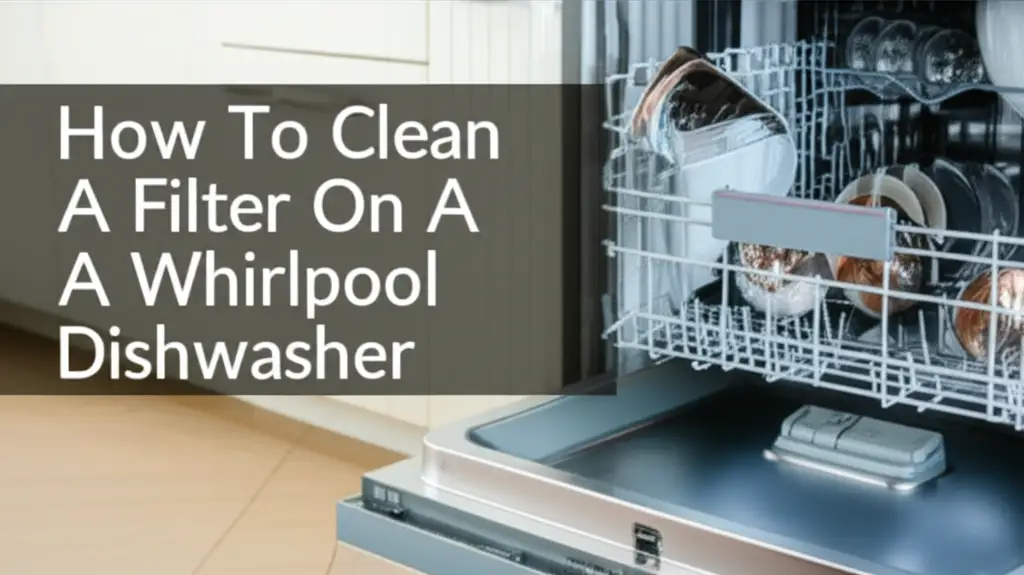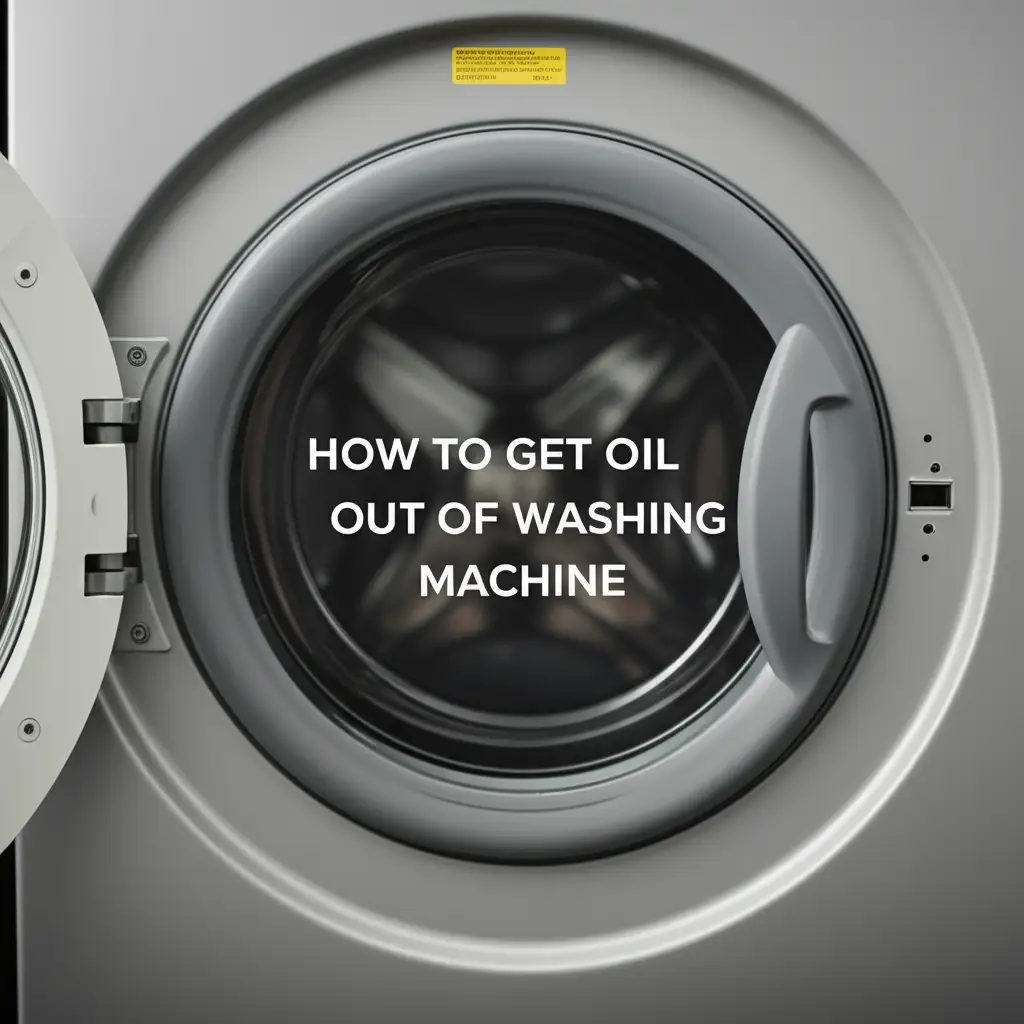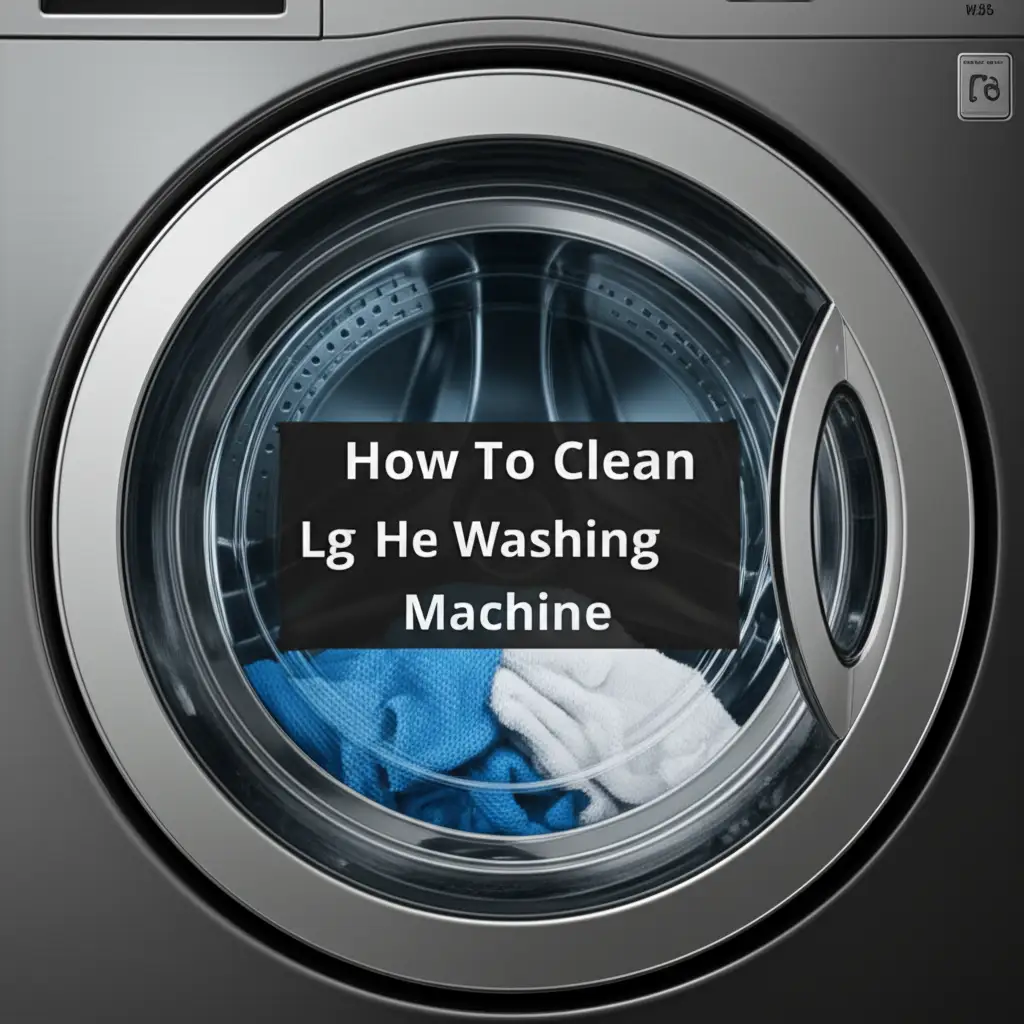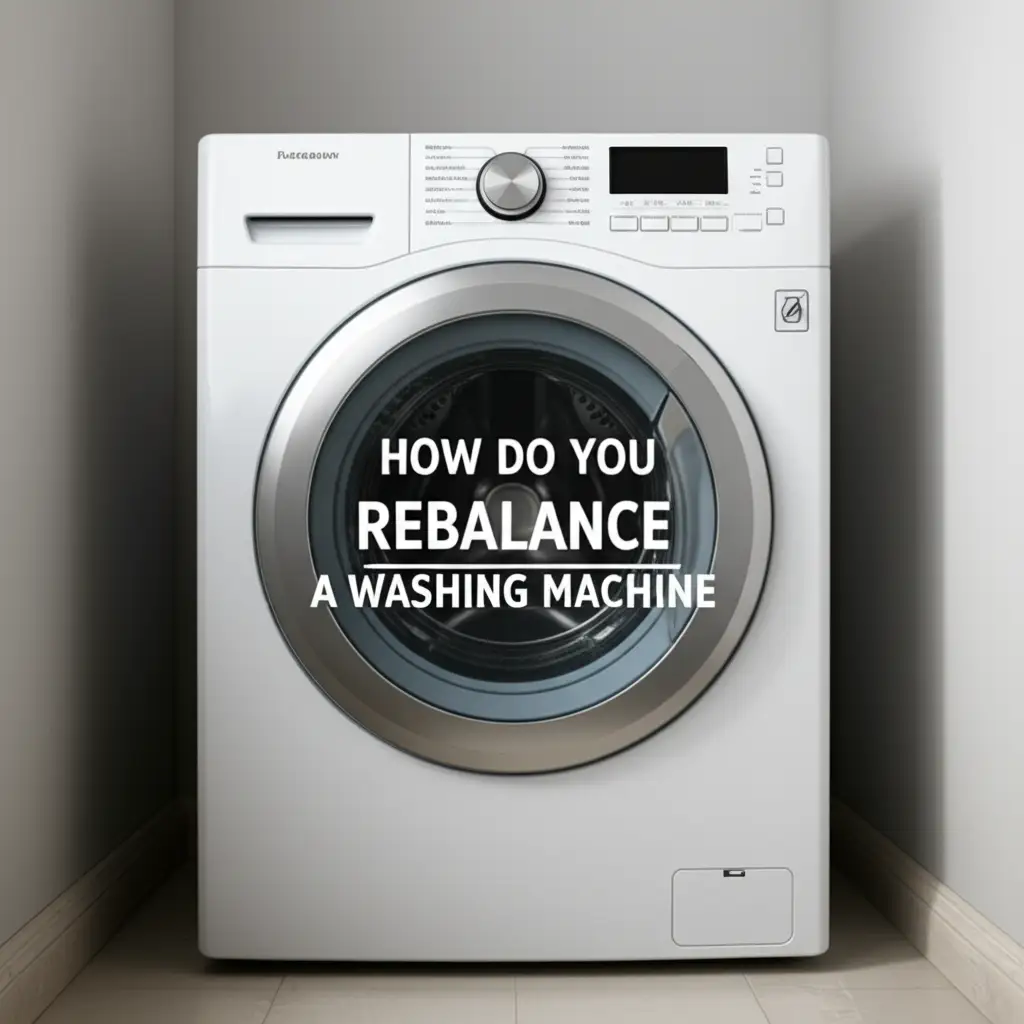· Elira Thomsen · Appliance Maintenance · 24 min read
How To Clean A Filter On A Whirlpool Dishwasher

Clean Your Whirlpool Dishwasher Filter: A Step-by-Step Guide
Have you ever opened your dishwasher after a cycle, expecting sparkling dishes, only to find them still coated in grime or notice a strange odor? It is a common frustration many homeowners face. The unseen culprit often hides at the bottom of your appliance: the dishwasher filter. This small but mighty component plays a vital role in keeping your dishes clean and your machine running smoothly.
Knowing how to clean a filter on a Whirlpool dishwasher is a simple skill that can save you from bigger problems. I often tell my friends that neglecting this task can lead to poor cleaning performance, unpleasant smells, and even costly repairs down the line. In this comprehensive guide, I will walk you through the entire process. We will cover everything from understanding your filter to a detailed step-by-step cleaning method. You will learn the signs of a dirty filter, gather the necessary tools, and discover how to keep your dishwasher in top shape.
Takeaway
Keeping your Whirlpool dishwasher filter clean is crucial for optimal performance and hygiene. Regularly cleaning this filter prevents food particles from redepositing on dishes, eliminates odors, and extends your dishwasher’s lifespan. By following simple steps, you can ensure your dishes come out spotless and your appliance remains efficient.
How to Clean a Filter on a Whirlpool Dishwasher
To clean a filter on a Whirlpool dishwasher, locate the cylindrical filter assembly at the bottom of the tub. Twist it counter-clockwise to unlock, then lift it out. Separate its two parts (fine filter and coarse filter). Rinse both under warm running water, gently scrubbing with a soft brush and mild dish soap to remove food debris. Rinse thoroughly, reassemble the filter, and twist it back into place clockwise until it locks.
Understanding Your Whirlpool Dishwasher Filter System
Your Whirlpool dishwasher works hard to keep your dishes clean. A key part of this cleaning process is its filter system. This system catches food bits and debris before they can recirculate and stick to your dishes. Understanding how this system functions is the first step to maintaining it properly.
Most modern Whirlpool dishwashers use a two-part filtration system. This system is usually located at the bottom of the dishwasher tub, under the lower spray arm. It consists of a coarse filter and a fine mesh filter. The coarse filter is often a larger cup or cylinder that traps bigger food particles. The fine mesh filter sits inside or below it, catching smaller debris like coffee grounds or rice. This design ensures that only clean water is sprayed onto your dishes during the wash cycle. Older Whirlpool models might have a different setup, sometimes including a self-cleaning filter with a macerator. However, most newer models feature a manual clean filter system. This system requires regular user intervention to prevent clogs and maintain efficiency. Knowing your specific model helps, but the general cleaning steps are similar for most Whirlpool manual filters.
When food particles are not caught, they can get sprayed back onto your dishes. This results in spots or a grainy film. A clean filter ensures water circulates freely, giving your dishes a thorough wash every time. It also prevents debris from clogging the spray arms or drain pump. I always emphasize to my family that a clean filter is the secret to truly clean dishes. It’s not just about looking clean; it’s about making sure your appliance works as it should. Without proper filtration, your dishwasher cannot perform its main job effectively.
Types of Whirlpool Dishwasher Filters
Whirlpool dishwashers generally come with one of two filter types:
- Manual Clean Filters: These are the most common in newer Whirlpool models. They are designed for easy removal and cleaning by the user. You will typically find a cylindrical assembly at the bottom center of the dishwasher tub. These filters need regular cleaning to prevent odors and poor wash performance. This is the type of filter we will focus on cleaning in this guide.
- Self-Cleaning Filters (Older Models): Some older Whirlpool dishwashers may have a “self-cleaning” filter system. This system uses a hard food disposer (macerator) to grind down food particles. While they reduce the need for manual cleaning, they can be noisier and may still benefit from occasional inspection and rinsing. If you have an older model, check your owner’s manual to confirm your filter type. Even self-cleaning filters can accumulate gunk over time and may need a deep clean.
Locating your filter is usually straightforward. Open the dishwasher door and look down at the bottom of the tub. The filter assembly is typically a round or cylindrical part in the center. It might be covered by the lower spray arm, which you can often lift or remove for better access. Always refer to your Whirlpool dishwasher’s specific user manual if you are unsure about the exact location or removal method for your model. The manual often provides diagrams and model-specific instructions.
Why Cleaning Your Whirlpool Dishwasher Filter Is Essential
Many people overlook the dishwasher filter until problems start. However, regular cleaning of this part is not just an optional chore; it is vital for your dishwasher’s health and your dishes’ cleanliness. Think of it as preventative care for your appliance. A clean filter allows your dishwasher to perform its best, ensuring sparkling results every time you run a cycle. It also helps in maintaining a healthy environment inside the machine itself.
When the filter gets clogged with food particles, grease, and other debris, water cannot flow freely through the system. This leads to several issues that impact both your dishwasher’s performance and its lifespan. Dirty filters can cause an unpleasant smell to linger in the dishwasher and on your dishes. They can also lead to ineffective cleaning, leaving behind food residue or a gritty film. Over time, this buildup can strain the dishwasher’s pump and motor, potentially leading to expensive repairs. I learned this the hard way years ago when my old dishwasher started making strange noises and leaving dishes dirty. A simple filter cleaning solved the problem instantly. Regularly cleaning your filter is a small effort that yields significant benefits.
Benefits of a Clean Dishwasher Filter
Maintaining a clean filter offers numerous advantages for your Whirlpool dishwasher and your home:
- Sparkling Clean Dishes: This is the most immediate and noticeable benefit. A clean filter ensures that food particles are trapped and removed, not recirculated onto your “clean” dishes. You will see fewer spots, streaks, and gritty residue.
- Eliminates Unpleasant Odors: Trapped food particles decompose over time, creating a foul smell inside your dishwasher. A clean filter prevents this buildup, keeping your appliance smelling fresh. This is a common issue people face and a clean filter can easily fix it.
- Improved Dishwasher Performance: When the filter is clean, water flows efficiently, and the spray arms can distribute water evenly and with proper pressure. This leads to more effective cleaning cycles and better overall performance from your appliance.
- Extends Appliance Lifespan: A clogged filter puts stress on your dishwasher’s motor and pump as they work harder to push water through. This added strain can lead to premature wear and tear. Regular cleaning reduces this stress, helping your Whirlpool dishwasher last longer.
- Energy Efficiency: An inefficient dishwasher that struggles to clean dishes may require multiple cycles or longer cycles, consuming more water and electricity. A well-maintained filter contributes to optimal energy use.
- Prevents Costly Repairs: Clogged filters can lead to more serious issues like drain pump failures or motor burnout. Proactive cleaning can help you avoid these expensive service calls. It is much cheaper to clean a filter than to replace a pump. For more information on how often you should clean your filter, check out our guide on how often should you clean your dishwasher filter.
Taking a few minutes to clean your filter regularly is a simple investment in your dishwasher’s longevity and performance. It ensures that your appliance continues to be a helpful tool in your kitchen, rather than a source of frustration.
Signs Your Whirlpool Dishwasher Filter Needs Cleaning
Your Whirlpool dishwasher often sends out clear signals when its filter needs attention. Recognizing these signs early can prevent more significant problems and save you from the frustration of rewashing dishes. I’ve learned to pay close attention to these indicators, and they’ve saved me a lot of hassle. Ignoring these warnings can lead to a less efficient dishwasher and even health concerns if bacteria build up. It’s better to address the issue quickly than to let it worsen.
If you start noticing any of these symptoms, it is a strong indication that it is time to inspect and clean your dishwasher filter. These signs are your dishwasher’s way of telling you it needs a little TLC to get back to its best performance. Catching these problems early can keep your appliance running smoothly for years to come.
Common Indicators of a Clogged Filter
Here are the most common signs that your Whirlpool dishwasher filter is due for a cleaning:
- Dishes Are Not Getting Clean: This is the most obvious sign. If your dishes come out with food particles, grease, or a gritty film still clinging to them, a dirty filter is likely the cause. The trapped debris is being recirculated back onto your dishes.
- Food Particles Redepositing on Dishes: You might notice small bits of food, like rice grains or vegetable scraps, on your “clean” dishes. This happens when the filter can no longer trap these particles, allowing them to flow back into the wash cycle.
- Unpleasant Odors from the Dishwasher: A musty, moldy, or rotten food smell emanating from your dishwasher, especially after a cycle, is a clear indicator. Trapped food debris in the filter decomposes, causing these foul odors. This is a strong signal that the filter needs immediate attention. Sometimes, mold can also grow if left unchecked. Learn how to address this problem specifically with our guide on how to clean mold off dishwasher.
- Standing Water at the Bottom of the Dishwasher: If you open your dishwasher and find standing water in the tub, a clogged filter might be obstructing the drain. The filter can prevent water from properly exiting the appliance. While other issues can cause draining problems, a dirty filter is a common culprit. If you are having draining issues, it is worth checking our guide on how to get the dishwasher to drain for more potential solutions.
- Increased Noise During Operation: While not as common, a severely clogged filter can sometimes cause the dishwasher to work harder to circulate water, leading to louder operational noises. The pump may strain more to push water through the restricted flow.
- Longer Wash Cycles: In some cases, a clogged filter can impact the efficiency of your dishwasher’s sensors or water flow, causing cycles to run longer than usual as the machine tries to achieve proper cleaning. This is the machine’s way of compensating for the reduced water flow.
Gathering Your Tools: Preparing for the Clean
Before you begin the process of cleaning your Whirlpool dishwasher filter, it’s wise to gather all the necessary tools and supplies. This preparation makes the task smoother, quicker, and more efficient. I always make sure I have everything on hand before starting any home maintenance project. You do not want to be halfway through the job and realize you are missing something essential. Having the right items ensures a thorough and safe cleaning process.
The good news is that you do not need any specialized or expensive equipment for this task. Most of the items are common household supplies that you likely already own. Taking a few moments to lay out your tools will prevent interruptions and help you focus on the cleaning itself. A well-prepared workspace also minimizes the chances of making a mess. Once you have everything ready, you will be able to proceed with confidence.
What You Will Need
Here is a simple checklist of the items you should have ready:
- Gloves (Optional but Recommended): Dishwasher filters can be slimy and contain old food particles. Wearing rubber or disposable gloves will protect your hands from grime and bacteria. I always use gloves for this task; it makes the job much more pleasant.
- Soft Brush or Old Toothbrush: A soft-bristled brush is essential for gently scrubbing away stubborn food debris and grease from the filter mesh without damaging it. An old toothbrush works perfectly for reaching small crevices. Avoid abrasive brushes or steel wool, as they can scratch or damage the delicate filter screen.
- Mild Dish Soap: A small amount of liquid dish soap helps break down grease and sticky residues. Avoid harsh chemical cleaners, as they can damage your dishwasher components or leave behind strong odors. A gentle, grease-cutting formula is ideal.
- Warm Water: You will need warm running water from your kitchen faucet for rinsing the filter thoroughly. A sink with a good drain is perfect for this.
- Paper Towels or an Old Cloth: These are useful for wiping down the filter area in the dishwasher tub and for drying the filter after cleaning. They can also help catch any spills or drips during the removal and reinstallation process.
- Small Bowl or Bucket (Optional): If you prefer not to clean the filter directly in your sink, a small bowl or bucket can be used to soak the filter in warm soapy water before scrubbing. This can help loosen particularly stubborn grime.
Having these simple items ready before you start will make the filter cleaning process much more straightforward and effective. It’s a small investment in time that pays off in a cleaner dishwasher and sparkling dishes.
Step-by-Step Guide: Removing Your Whirlpool Dishwasher Filter
Removing the filter from your Whirlpool dishwasher is a straightforward process. You do not need any special tools for this step. Most Whirlpool models are designed for easy user access to the filter. Taking a moment to understand the mechanism will prevent any accidental damage. Remember to be gentle and follow the instructions specific to your model if your owner’s manual provides them.
Before you begin, ensure your dishwasher has completed its last cycle and is empty. It’s also a good idea to make sure the dishwasher is cool, as residual heat could be uncomfortable. I always double-check these things to avoid any surprises. The goal is to access the filter safely and efficiently so you can give it a proper cleaning. Let’s get started on getting that filter out.
Detailed Removal Instructions
Follow these steps to safely remove the filter from your Whirlpool dishwasher:
- Open the Dishwasher Door Completely: Pull the dishwasher door all the way down so it lies flat. This gives you full access to the interior of the tub.
- Locate the Filter Assembly: Look at the bottom of the dishwasher tub. In most Whirlpool models, the filter is a cylindrical assembly located in the center, directly under the lower spray arm. It might look like a small cup or a two-piece unit.
- Remove the Lower Dish Rack: For easier access, you will need to remove the lower dish rack. Simply pull it forward on its rollers until it clears the tub. Lift it carefully and set it aside on a clean surface, such as your kitchen counter. This gives you unobstructed access to the filter area.
- Identify the Two-Part Filter System: Your Whirlpool filter typically consists of two main parts:
- Coarse Filter (Upper Filter Assembly): This is the larger, often cylindrical or basket-like part you see first.
- Fine Filter (Lower Filter): This is usually a flat, mesh screen that sits underneath the coarse filter.
- Twist and Unlock the Coarse Filter: Grasp the coarse filter assembly (the cylindrical part). You will usually see an arrow or an unlock symbol indicating the direction to turn. Twist it counter-clockwise, typically about a quarter turn, until it unlocks. You should feel a slight click or release. This action disengages it from its locking mechanism.
- Lift Out the Coarse Filter: Once unlocked, gently lift the coarse filter assembly straight up and out of the dishwasher tub. It might be a bit snug, but it should come out with minimal effort. Be careful not to spill any trapped water or debris.
- Remove the Fine Filter (Mesh Screen): After removing the coarse filter, you will see the flat fine mesh filter at the bottom of the filter housing. This part often has a small handle or notch. Lift it straight up and out of the tub. It may also have some debris on it.
- Inspect for Debris: Take a moment to look at both filter parts. You will likely see trapped food particles, grease, and other grime. This is completely normal and shows why regular cleaning is important.
With both parts of the filter removed, you are now ready for the actual cleaning process. Set the filter parts aside on a protected surface, like a paper towel, near your sink.
The Cleaning Process: How to Clean Your Whirlpool Dishwasher Filter Effectively
Now that you have successfully removed your Whirlpool dishwasher filter, it’s time to give it a thorough cleaning. This step is critical to ensure that your dishwasher can perform at its best and keep your dishes spotless. The cleaning process is straightforward and does not require harsh chemicals. My approach is always to use gentle methods that are safe for the appliance and effective for removing stubborn grime.
Remember, patience and thoroughness are key here. You want to remove all traces of food debris and grease from both parts of the filter. A clean filter allows for optimal water flow and prevents the redeposition of particles onto your dishes. Take your time during this step to ensure no hidden gunk is left behind. This attention to detail will pay off with cleaner dishes and a fresher-smelling dishwasher.
Detailed Cleaning Steps
Follow these steps to effectively clean both parts of your Whirlpool dishwasher filter:
- Rinse Under Warm Running Water: Take the coarse filter first. Hold it under warm running water in your sink. Use your fingers or an old paper towel to gently dislodge any large food particles that are stuck. Make sure to rinse both the inside and outside of the filter thoroughly. Do the same for the fine mesh filter, paying close attention to the tiny holes in the mesh.
- Apply Mild Dish Soap: Once the initial rinse is done, apply a few drops of mild dish soap to a soft brush or an old toothbrush. My go-to is a regular dish brush with soft bristles.
- Gently Scrub the Filters:
- Coarse Filter: Use the soapy brush to gently scrub all surfaces of the coarse filter. Pay attention to any nooks, crannies, or ridges where food might accumulate. Make sure to get into any recessed areas.
- Fine Filter: Carefully scrub the mesh screen of the fine filter. The small holes can easily trap tiny particles. The toothbrush is particularly effective here for getting into the fine mesh without damaging it. Be gentle, as the mesh can be delicate. Do not press too hard or use anything abrasive that could tear the screen.
- Rinse Thoroughly Again: After scrubbing, rinse both filter parts thoroughly under warm running water. Ensure all soap residue and loosened food particles are completely washed away. Hold the filters up to the light to confirm that no visible debris remains and water can flow freely through the mesh. If you see any remaining gunk, repeat the scrubbing and rinsing process.
- Inspect the Filter Housing in the Dishwasher: While the filters are out, take a moment to inspect the filter housing area at the bottom of your dishwasher tub. You might find some standing water or small particles that have accumulated in the cavity. Use a paper towel or a damp cloth to wipe out any visible debris or grime from this area. This ensures a completely clean environment for your reinstalled filter.
- Dry the Filters (Optional, but Recommended): While not strictly necessary, allowing the filters to air dry or gently patting them with a paper towel can prevent immediate re-accumulation of water spots or lingering moisture. This also gives you a chance to ensure they are completely clean before reassembly.
By following these detailed cleaning steps, your Whirlpool dishwasher filter will be spotless and ready to be reinstalled. This thorough cleaning ensures optimal performance for your appliance and helps you achieve the cleanest dishes possible.
Reinstalling the Filter and Final Checks
Once your Whirlpool dishwasher filter parts are sparkling clean and rinsed, the next crucial step is to reassemble and reinstall them correctly. This process is just as important as the removal, as an improperly seated filter can lead to leaks, poor drainage, or continued cleaning issues. I always make sure the filter is perfectly aligned and locked into place. It prevents any further headaches down the line.
The design of Whirlpool filters makes reinstallation straightforward. You will essentially reverse the steps you took for removal. Paying attention to how the parts fit together and ensuring they are securely locked will ensure your dishwasher runs efficiently. This final step completes the maintenance cycle and gets your appliance ready for its next load of dishes.
How to Reassemble and Reinstall Your Filter
Follow these steps carefully to put your Whirlpool dishwasher filter back into place:
- Assemble the Filter Parts:
- First, take the fine mesh filter (the flat screen). Place it back into the bottom of the filter housing inside the dishwasher tub. Ensure it lies flat and sits securely in its designated spot. It should fit snugly without any gaps.
- Next, take the coarse filter (the cylindrical part). Insert it into the fine filter and the housing. It usually has notches or grooves that align with corresponding features in the fine filter and the dishwasher’s base.
- Align and Lock the Coarse Filter:
- Once the coarse filter is seated, align its locking tabs with the slots in the dishwasher’s base. You might see arrows or an unlock symbol on the filter indicating the starting position.
- Gently push down and twist the coarse filter clockwise until it locks securely into place. You should feel a distinct click, or the arrow should align with a “lock” symbol. This locking mechanism prevents the filter from dislodging during cycles. Do not overtighten; just ensure it’s snug and secure.
- Replace the Lower Dish Rack: Carefully slide the lower dish rack back into the dishwasher tub. Ensure it rolls smoothly on its tracks and is fully seated. Make sure no parts of the rack obstruct the filter area.
- Close the Dishwasher Door: Close the dishwasher door firmly.
- Run a Test Cycle (Optional, but Recommended): For peace of mind, you might consider running a short rinse-only cycle or an empty normal cycle. This allows you to check for any leaks around the filter area and to ensure the dishwasher sounds normal. It also helps flush any remaining debris from the lines. I often do this to confirm everything is working perfectly.
- Observe Dishwasher Performance: Over the next few wash cycles, pay attention to your dishes. They should come out noticeably cleaner, without any spots or food particles. The dishwasher should also smell fresh. If you encounter any issues, re-check the filter’s seating and alignment.
Proper reinstallation is key to maximizing the benefits of cleaning your Whirlpool dishwasher filter. A securely placed and clean filter will ensure your dishwasher continues to deliver sparkling dishes and run efficiently for a long time.
Maintaining a Clean Dishwasher Filter: Frequency and Best Practices
Cleaning your Whirlpool dishwasher filter is not a one-time task; it’s an ongoing part of good appliance maintenance. Regular upkeep prevents buildup, ensures optimal performance, and extends the lifespan of your machine. I always tell my friends that consistency is key when it comes to keeping their appliances running smoothly. Just like changing the oil in your car, regular filter cleaning is a small effort that yields big returns.
Establishing a routine for filter cleaning will help you avoid the common issues associated with clogged filters, such as dirty dishes and unpleasant odors. The frequency of cleaning depends on your usage habits and what you wash. However, there are general guidelines and best practices that can help you maintain a consistently clean filter and a hygienic dishwasher. Making this a habit will save you time and frustration in the long run.
Recommended Cleaning Frequency
How often should you clean your Whirlpool dishwasher filter?
- Monthly for Moderate Use: For most households that use their dishwasher a few times a week, a monthly cleaning is a good baseline. This frequency typically prevents significant buildup.
- Bi-Weekly for Heavy Use/Pre-Rinsing Habits: If you use your dishwasher daily, or if you often put heavily soiled dishes into the dishwasher without much pre-rinsing, consider cleaning the filter every two weeks. More food debris will naturally accumulate faster.
- As Needed (When Signs Appear): Always clean the filter immediately if you notice any of the signs of a clogged filter, such as dirty dishes, odors, or standing water, regardless of your last cleaning date. Your dishwasher is telling you it needs attention.
Remember, these are general guidelines. Adjust the frequency based on your dishwasher’s performance and how quickly the filter accumulates debris.
Best Practices for Filter Longevity and Dishwasher Health
Beyond regular cleaning, adopting a few simple habits can significantly improve your dishwasher’s performance and reduce filter maintenance needs:
- Scrape, Don’t Pre-Rinse: While it might seem counterintuitive, most modern dishwashers, including Whirlpool, are designed to work best when you scrape large food particles off plates, but do not thoroughly pre-rinse them. The dishwasher detergent needs some food soil to properly activate its enzymes. However, removing large chunks is crucial. Scrape off bones, large food scraps, and anything that could visibly clog the filter or spray arms.
- Avoid Large Debris: Be mindful of what goes into the dishwasher. Avoid putting items with excessive amounts of seeds, nuts, or other small, dense particles that can easily get trapped in the filter.
- Use Quality Detergent: A good quality dishwasher detergent can help break down food particles more effectively, reducing the amount of residue that reaches the filter. Consider using rinse aid for optimal drying and spot prevention.
- Periodically Clean the Entire Dishwasher: Besides the filter, periodically run an empty cycle with a dishwasher cleaner or a cup of white vinegar to deep clean the interior, spray arms, and hoses. This can help remove grease buildup and mineral deposits throughout the system. I sometimes use a cup of vinegar in the bottom of the dishwasher or in the rinse aid dispenser for this. You can learn more about this by checking out our guide on where to put vinegar in dishwasher to clean.
- Check Spray Arms: Occasionally inspect the spray arms for clogged holes. Food particles can sometimes bypass the filter and get stuck in these openings, affecting water distribution. You can usually remove the spray arms and rinse them.
- Consult Your Manual: Always refer to your specific Whirlpool dishwasher’s owner’s manual for any model-specific care instructions or recommended cleaning products. Each model might have slight variations.
- Address Error Codes Promptly: If your Whirlpool dishwasher displays error codes, like E1 F9, it could indicate a drainage or circulation issue potentially linked to a clogged filter or pump. Addressing these codes quickly can prevent further damage. Our article on how to fix E1 F9 Whirlpool dishwasher can provide further assistance.
By making filter cleaning a regular part of your routine and incorporating these best practices, you can ensure your Whirlpool dishwasher remains a reliable and efficient kitchen helper. It truly makes a difference in the cleanliness of your dishes and the longevity of your appliance.
FAQ Section
How often should I clean my Whirlpool dishwasher filter?
You should aim to clean your Whirlpool dishwasher filter once a month for average use. If you use your dishwasher daily, or if your dishes are often heavily soiled, consider cleaning it every two weeks. Always clean it immediately if you notice dishes are still dirty, the dishwasher smells bad, or water is not draining properly.
Can I put my Whirlpool dishwasher filter in the dishwasher?
No, you should not put your Whirlpool dishwasher filter back into the dishwasher to clean it. The dishwasher’s wash cycle will not effectively clean the trapped debris from the filter. Instead, it might push the particles deeper into the mesh. Always clean the filter by hand using warm water, dish soap, and a soft brush.
What happens if I don’t clean my Whirlpool dishwasher filter?
If you do not clean your Whirlpool dishwasher filter, trapped food particles will accumulate. This buildup leads to dishes coming out dirty with food residue, an unpleasant odor from the dishwasher, and potential drainage issues. Over time, a clogged filter can also strain the dishwasher’s pump, potentially leading to costly repairs and a shortened appliance lifespan.
My Whirlpool dishwasher smells bad even after cleaning the filter. What now?
If your dishwasher still smells bad after cleaning the filter, the odor might be coming from other areas. Check the spray arms for clogged holes or food debris. You might also have mold or mildew buildup in the door gasket or crevices. Run an empty hot water cycle with a dishwasher cleaner or a cup of white vinegar placed in
- Whirlpool dishwasher
- dishwasher filter cleaning
- dishwasher maintenance
- appliance care
- kitchen cleaning
- clean dishes





